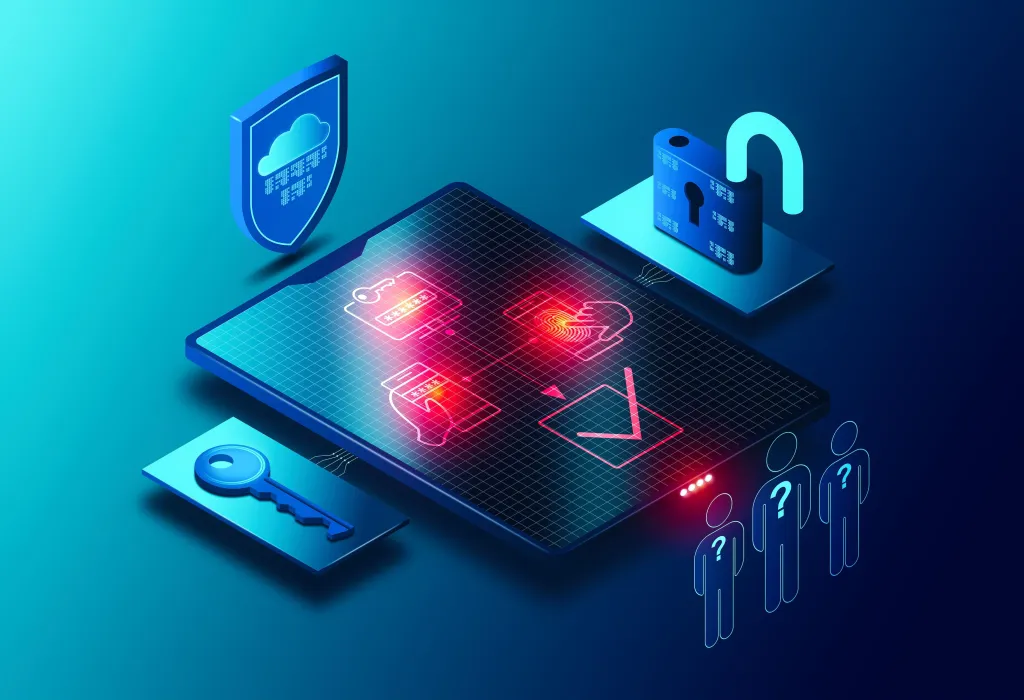For years, businesses have faced data breaches and account takeover instances. And the majority of them were a result of compromised credentials.
The rising instances of compromised credentials and weak passwords have pushed organizations to incorporate multi-factor authentication (MFA) into their platforms, adding extra security layers.
However, over a few years, cybercriminals have found loopholes in the current MFA security practices for exploiting customer information and sensitive business details.
And one of the most prominent threats to MFA is the MFA fatigue attack. This attack aims to spam a user whose credentials have already been compromised by bombarding it with MFA authorization requests until they are annoyed and accidentally approve the request.
Let’s uncover aspects of MFA fatigue attacks and how businesses must gear up to protect sensitive business and customer information.
What are MFA fatigue attacks?
MFA (multi-factor authentication) is an essential security mechanism used to verify users. It prevents unauthorized access to the services by verifying users through something they know (e.g., password), something they have (e.g., physical token), and something they personify (e.g., fingerprint).
However, these MFA mechanisms can be bypassed by targeted attacks such as phishing, malware, and brute force, leading to account takeover and data breaches.
This specific attack, known as “MFA fatigue,” aims to spam a user whose credentials have already been compromised. The attackers then bombard the user with MFA authorization requests until they are annoyed and accidentally approve the request.
To make it harder for hackers to guess the code, users will often be required to enter three or more OTP requests before gaining access to their accounts.
If too many factors are involved in accessing your account, it becomes too easy for attackers to spam each element until they find one where your response time is longer than usual. That’s when they’re really going to be able to exploit this method of authentication.
Businesses should take MFA fatigue attacks seriously because it could lead to massive losses like sensitive business details if an MFA fatigue attack targets their employee or users/client as the attacker may gain access to crucial information.
How to mitigate the risks associated with MFA fatigue attacks
One of the biggest questions that most businesses are relying on MFA is how they could protect their employees/users from increasing MFA fatigue attacks.
Let’s understand the ways organizations could shield themselves against MFA fatigue attacks:
Incorporate adaptive authentication/risk-based authentication
And the only way to ensure robust security is to incorporate advanced multi-factor authentication through adaptive authentication/risk-based authentication.
Adaptive authentication/risk-based authentication ensures that even if multiple layers of authentication are compromised, including passwords and OTP, a sudden change in the authentication request is recognized, and another stringent layer of authentication is automatically added.
Adaptive authentication works flawlessly in identifying any underlying authentication risks. It automatically reinforces authentication security by analyzing an unusual login attempt, a new geographical location of access, and several attempts.
Businesses can incorporate adaptive authentication and ensure their employees or clients are safeguarded against MFA fatigue attacks.
Employee awareness
Since we know that an MFA fatigue attempt results from a human error, spreading awareness to your employees regarding the same could be a great way to protect your sensitive information.
Most of the time, your employees aren’t aware of the minor things they need to take care of while accessing their accounts. And this could be pretty fatal from business data security perspective.
Organizing training sessions on the latest threats, cybersecurity hygiene, and safety measure could yield fruitful results and minimize various cyber attacks, including MFA fatigue attacks.
Frequently training your staff is undoubtedly the best way to ensure they’re aware of all the latest threat vectors and hence could safeguard themselves if they find anything suspicious.
In conclusion
MFA has offered excellent security for businesses embarking on a digital transformation journey. However, the underlying risks with this authentication mechanism, including MFA fatigue, can’t be overlooked.
Globally, MFA fatigue attacks have impacted businesses and caused reputational and financial losses worth millions of dollars.
The aforementioned steps could help organizations ensure stringent security against MFA fatigue attacks and hence, mitigates the chances of financial and reputational loss.

